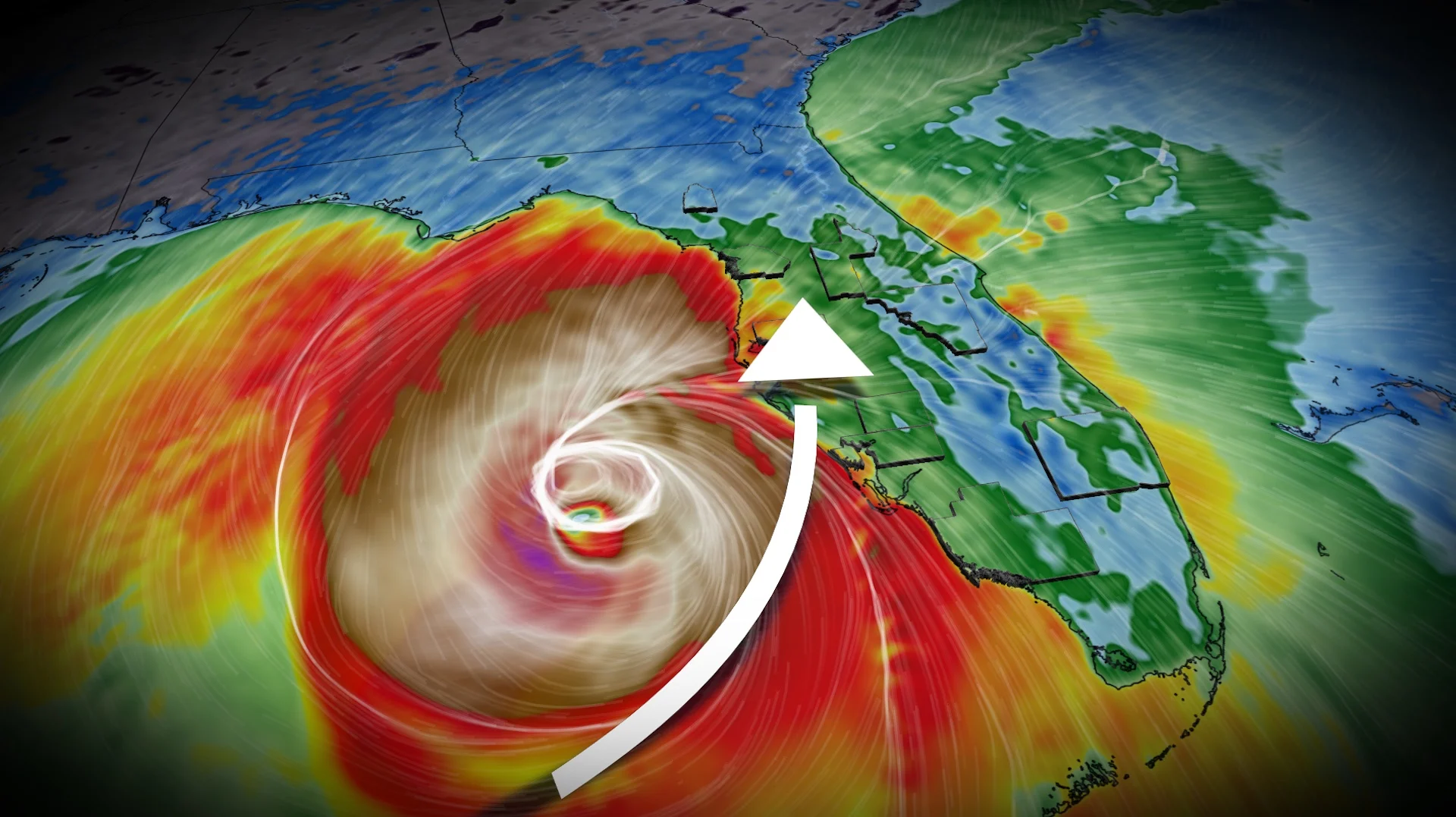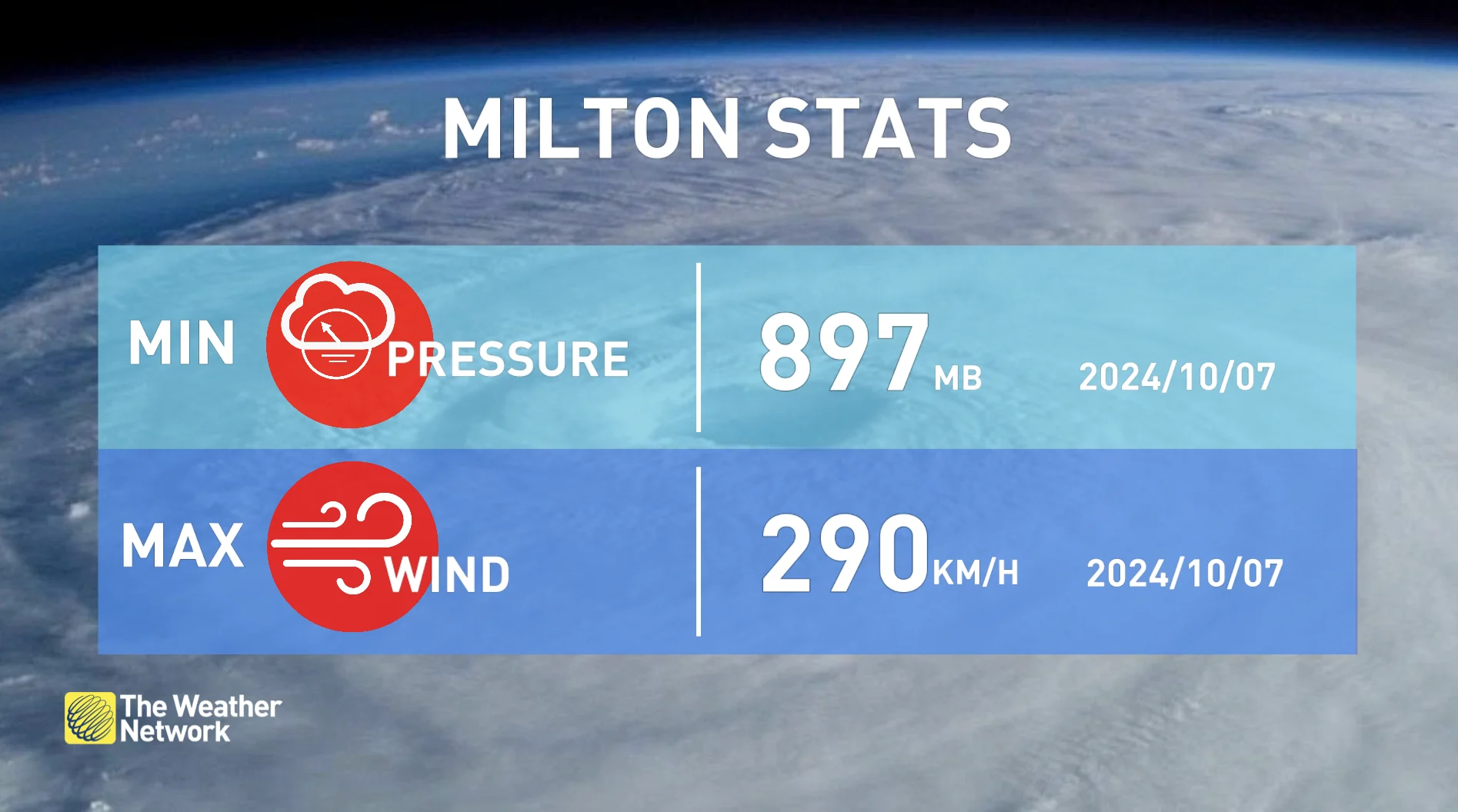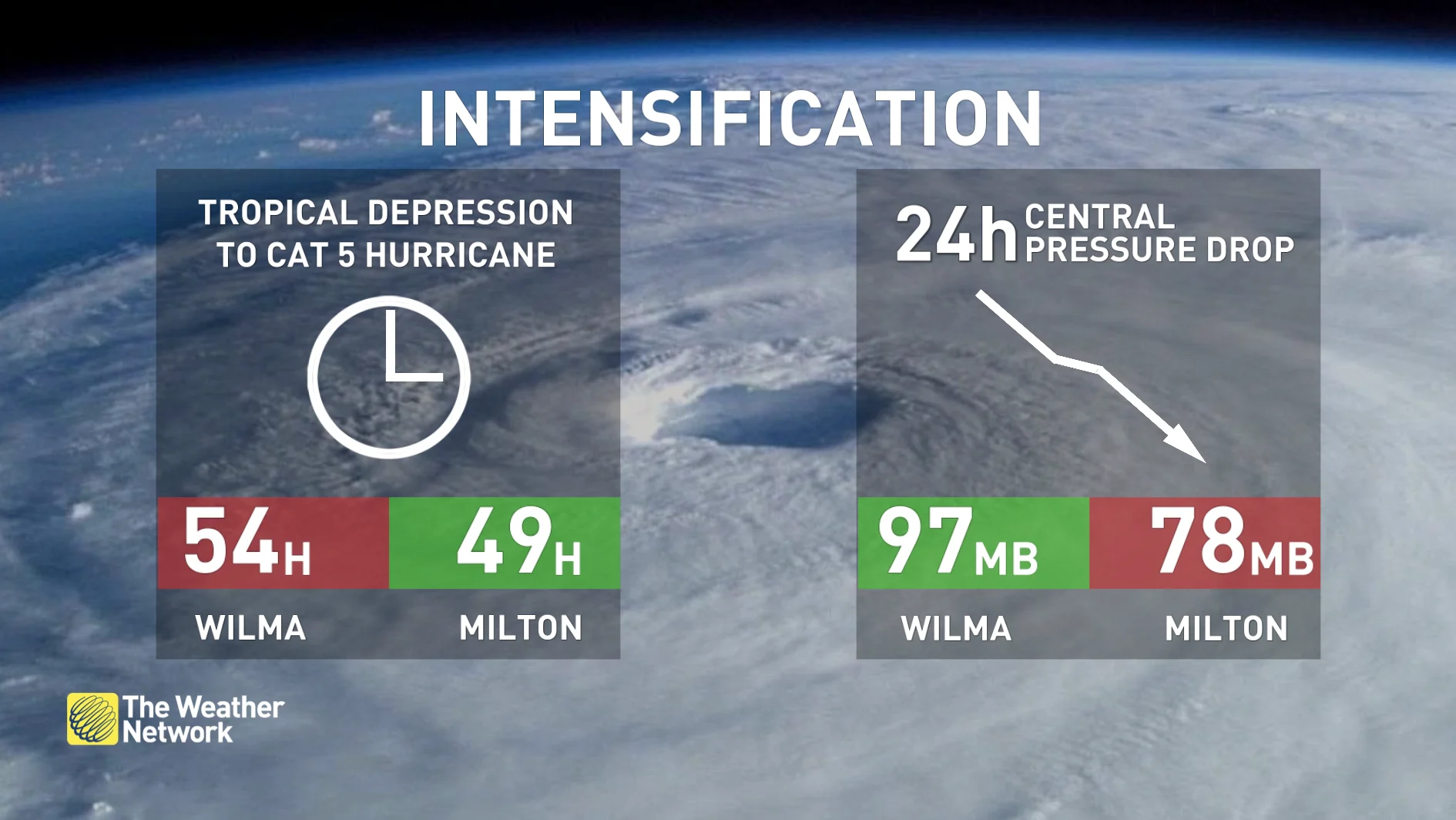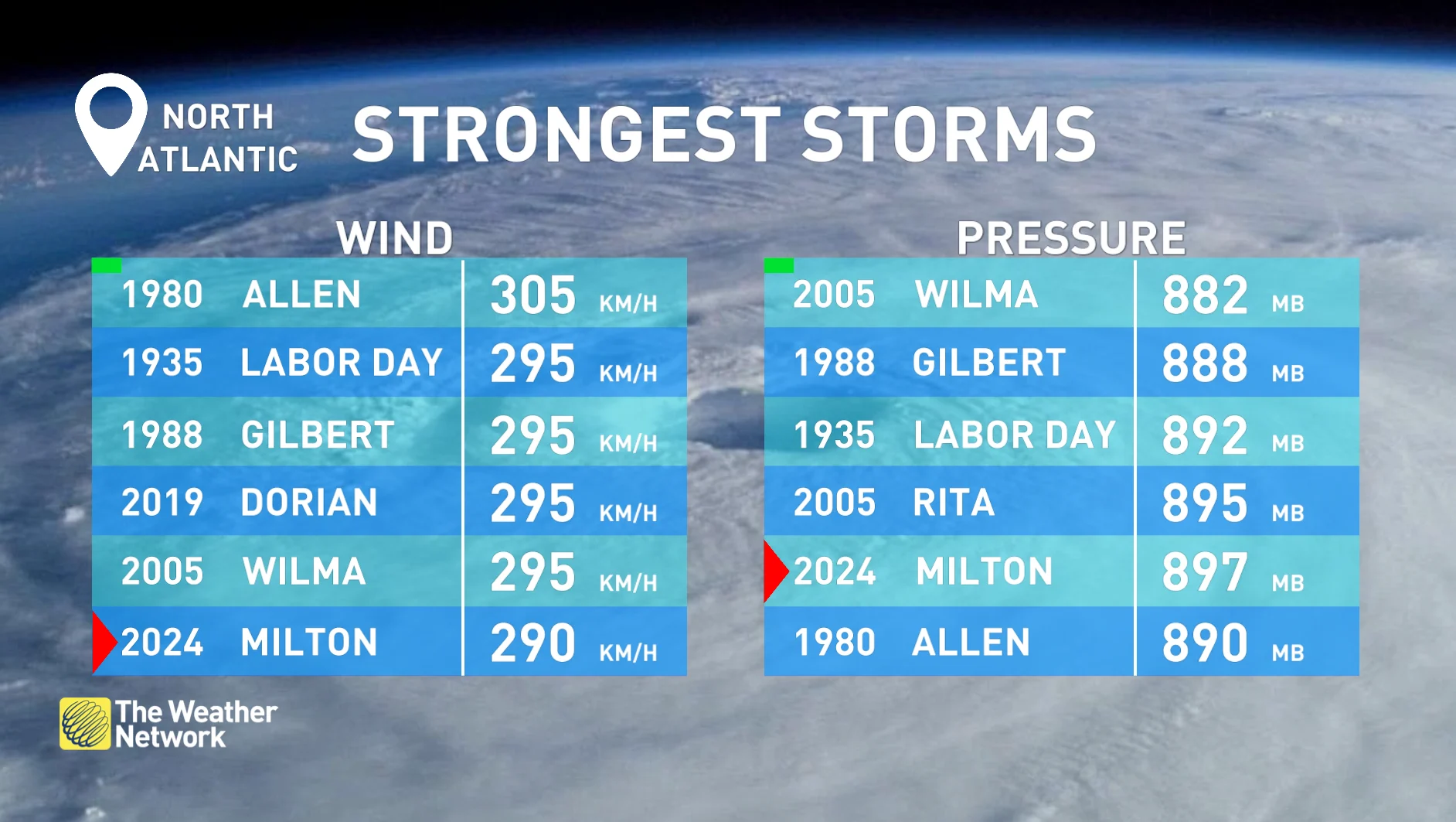
Milton versus other Atlantic hurricanes: What storm comes out on top?
Hurricane Milton has shattered records for being the strongest storm on Earth for 2024, but how does it compare to the Atlantic's most powerful systems?
Hurricane Milton quickly made a place for itself in the history books on Oct. 7 as the fastest-developing storm on record, expanding from a mere tropical depression into a monstrous Category 5 hurricane.
The storm rapidly intensified in a little more than 49 hours to become a nightmarish storm, beating the previous record of 54 hours set by Hurricane Wilma in 2005.
Keep up-to-date with the latest Hurricane Milton developments by visiting The Weather Network's hurricane hub.

Milton is now the strongest storm on our planet for 2024, beating out Hurricane Beryl, which had the previous strongest winds of 270 km/h, as well as typhoons Yagi and Krathon, which both held the record until now for the lowest, barometric pressure at 915 millibars. Hurricane Milton set a new record with maximum, sustained winds of 285 km/h and a barometric pressure of 897 millibars.
Milton's accomplishments
Milton is the second Category 5 hurricane to sail the North Atlantic basin this year, with Beryl being the first back in July. But what adds some degree of rarity to the situation is the time of year. Milton is the second storm to reach Category 5 status in the Gulf of Mexico in October since 1966.

Even though its intensity wavered for a few hours as it underwent an eye wall replacement cycle (a radial expansion of the wind field), it strengthened again to Category 5 on Sunday after the cycle had finished. The last time a storm hit Category 5-strength twice was back in 2017 with Hurricane Maria. Since Maria, there have been seven additional Category 5 storms in the Atlantic basin, including Milton. That makes Milton the 42nd known Category 5 hurricane since 1851.
How does Milton stack up against other Atlantic storms?
Milton developed over the warm waters of the Gulf of Mexico and took on characteristics such as a narrow eye that enabled it to intensify rapidly. It dethroned Hurricane Wilma's (2005) record of 54 hours to strengthen from a tropical depression to a Category 5 storm. Milton accomplished this in less than 50 hours, in 49 to be exact.

Despite this, Wilma held onto its 24-hour central pressure decrease title of 97 millibars, and Milton fell 19 millibars short, giving it a grand total of 78 millibars in 24 hours. When the central pressure bottomed out at 987 millibars, the winds were screaming at 290 km/h, lofting this storm safely into the top 10 list of strongest Atlantic hurricanes. The minimum pressure of 897 millibars put Milton in fifth place after Rita (2005), and the winds snatched sixth place after Wilma (2005).
While it may struggle to rival the wind and pressure records of 305 km/h (from Allen in 1980) and 882 millibars (from Wilma in 2005), it remains a formidable storm that will cause significant disruptions to Florida in the coming days.
WATCH: N.S. crews headed to Florida for Hurricane Milton
With files from Dylan Kikuta, a meteorologist at The Weather Network, and Anika Beaudry, a digital journalist at The Weather Network.











